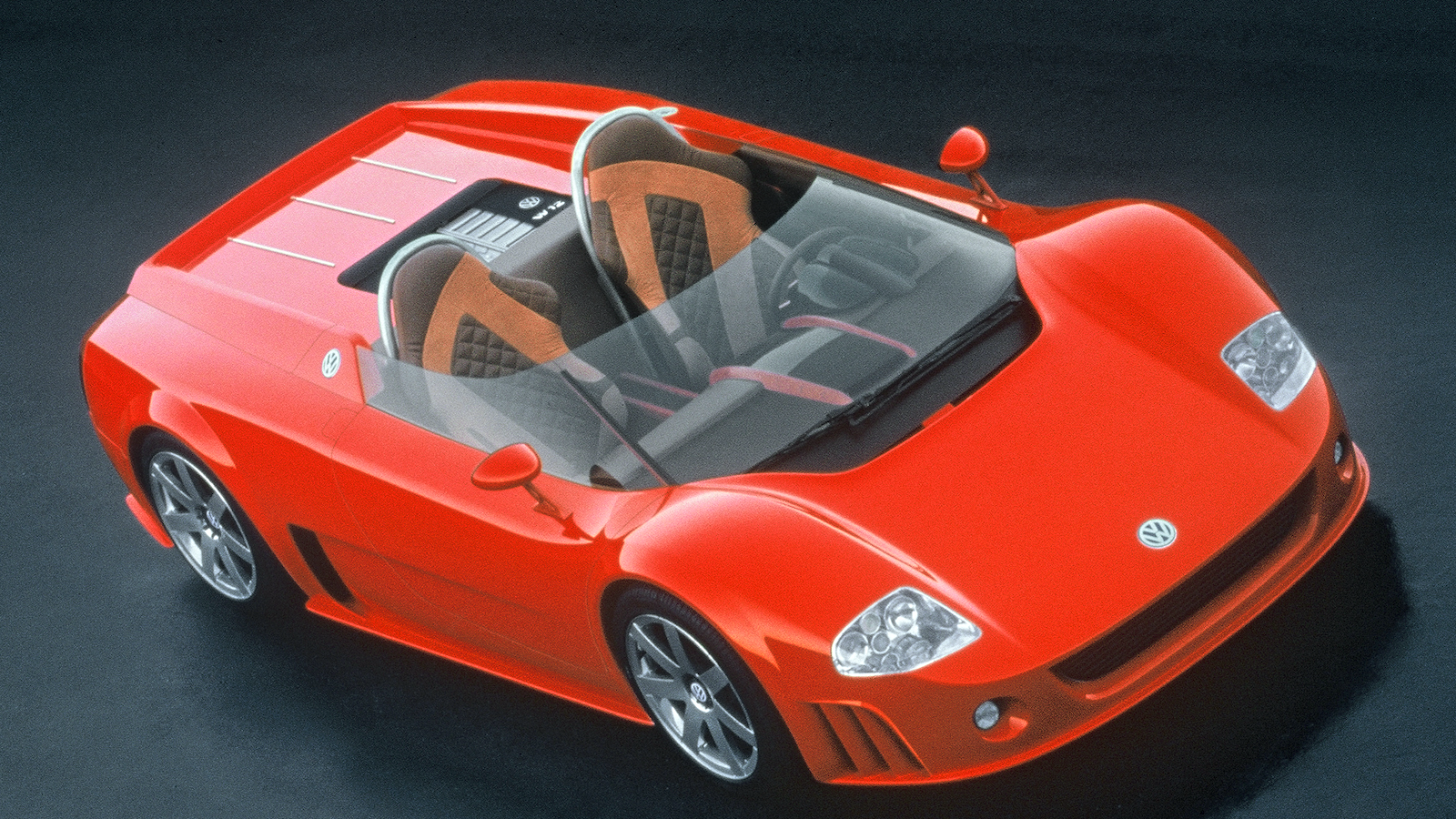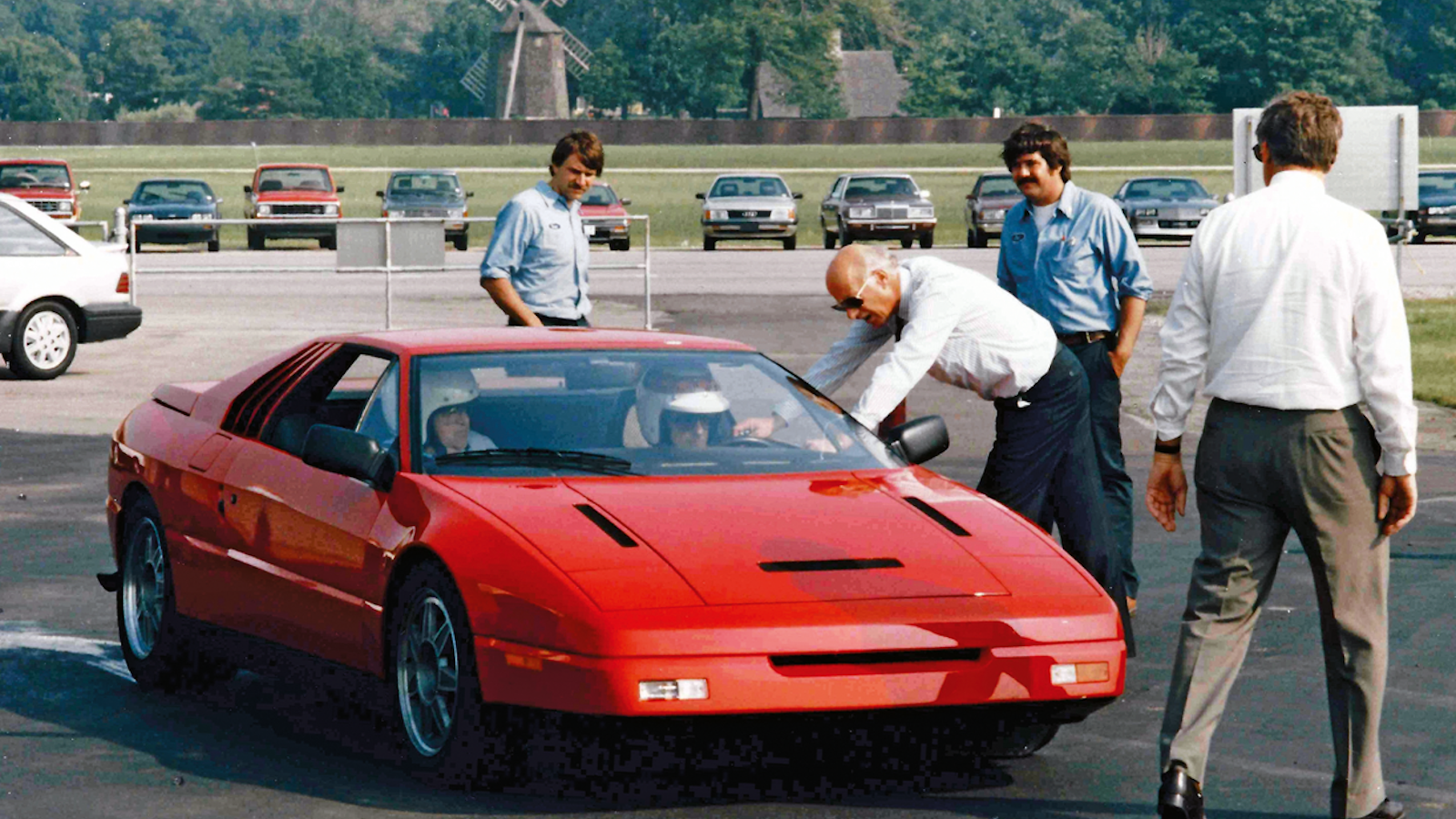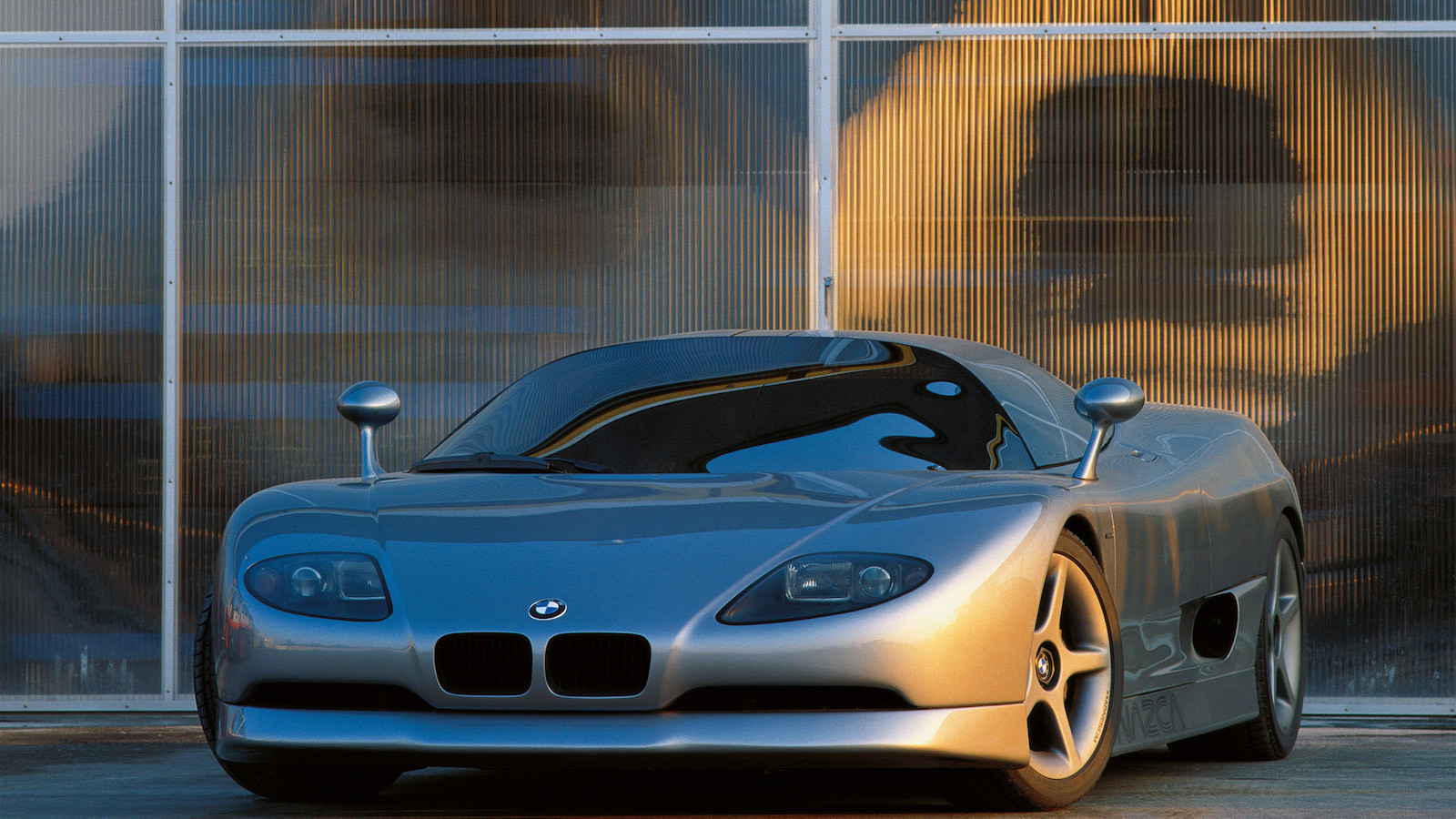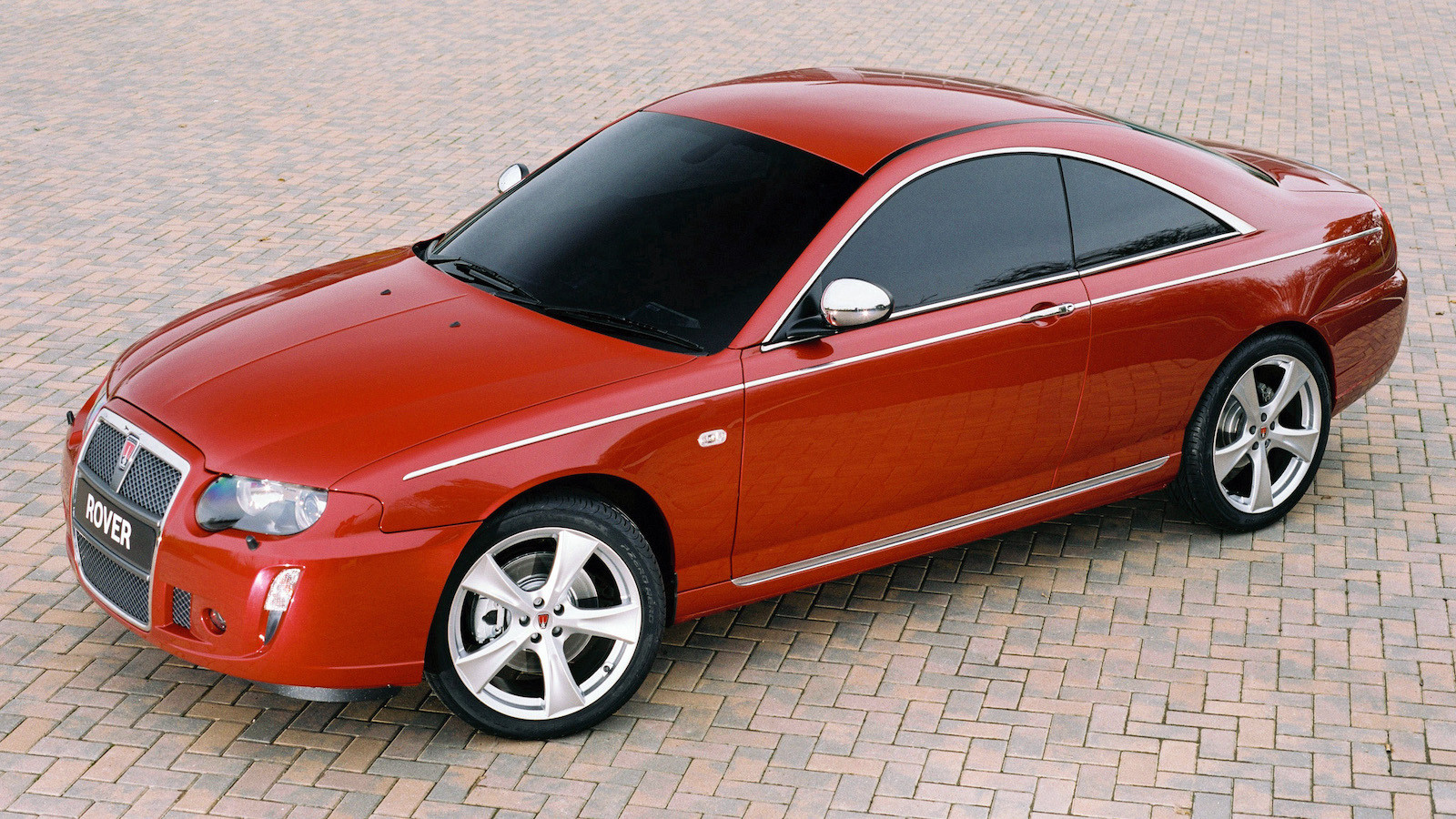-
 © Volkswagen AG
© Volkswagen AG -
 © Ed Bagnall
© Ed Bagnall -
 © Volvo Cars
© Volvo Cars -
 © Ford Archive
© Ford Archive -
 © Bonhams
© Bonhams -
 © Nissan Heritage Collection
© Nissan Heritage Collection -
 © Porsche AG
© Porsche AG -
 © Tokumeigakarinoaoshima
© Tokumeigakarinoaoshima -
 © Audi AG
© Audi AG -
 © BMW Group
© BMW Group -
 © Daihatsu
© Daihatsu -
 © Daimler AG
© Daimler AG -
 © Axiam
© Axiam -
 © BMW Group
© BMW Group -
 © Yamaha Motor Company
© Yamaha Motor Company -
 © Renault Classic
© Renault Classic -
 © Italdesign
© Italdesign -
 © Nissan Heritage Collection
© Nissan Heritage Collection -
 © Volkswagen AG
© Volkswagen AG -
 © MG Rover
© MG Rover -
 © BMW Group
© BMW Group -
 © Jaguar Cars
© Jaguar Cars -
 © Ford Motor Company
© Ford Motor Company -
 © Ian Muttoo/Creative Commons licence
© Ian Muttoo/Creative Commons licence -
 © Volkswagen AG
© Volkswagen AG
-
A glimpse of what might have been
Plenty of concept cars come, create a motor show stir, then disappear – while others get a little closer to the production line.
Here’s our selection of modern-classic-era concepts that got nearer than many, some even finding their way onto roads and circuits in the hands of some lucky journalists.
Organized in chronological order, these are 24 of the most exciting, innovative and avant-garde modern classics we wish we’d had a chance to sample from the driver’s seat.
-
1. Aston Martin Bulldog (1979)
The Bulldog emerged from a desire to showcase Newport Pagnell’s ability to make a supercar – as if Aston Martin needed to prove anything.
By the dawn of the 1980s the firm was, however, striving to move in a bold new direction. Fresh from penning the controversial Lagonda, William Towns went all wedgy again – not that the Bulldog’s acute angles hurt its performance…
It certainly looked striking, yet its double-ton top speed was even more remarkable. The promise from its modified twin-turbo c650HP DBS V8 motor was an astonishing 237mph – in reality, it ‘only’ managed 192mph during testing at MIRA. Recently restored, the effort to crack 200mph is now on once again.
-
2. Volvo LCP2000 (1983)
Not so much a concept that almost made it, but one that managed to accurately predict motoring trends nearly two decades into the future.
The Volvo LCP2000 was a Swedish engineering showcase that attempted to foretell what a car of the year 2000 would be like – back in 1983.
Extensive use of plastics, magnesium, aluminum and even carbonfiber door frames kept the weight low, which was just as well, because the powerplant displaced a mere 1.3 liters from its three cylinders.
Still, its 70+mpg was virtually unheard of, while its styling would go on to provide inspiration for the 480.
-
3. Ford Maya (1984)
Ford had another pop at Ferrari in the mid-1980s with a fully realized, Italdesign-penned, mid-engine sports car.
The idea was to steal sales away from the Prancing Horse in the notoriously conservative home market. Patriotic American buyers would surely choose the Ford over its Italian rival? Well, no, because they weren’t given the chance.
The Maya was eventually canned, but only after two years of development and three prototype generations – all of which were fully functioning with the latter even trimmed with bespoke interiors.
The top-performing Maya II EM had a twin-turbo V6 that made a very healthy c300HP.
-
4. Lotus Etna (1984)
Yet another Italdesign creation from the same year that never made it to the showroom was the Lotus Etna. Built on an extended Esprit chassis, Etna was to be a true supercar.
All of Lotus’ F1 innovations were to be thrown at it, including traction control, active suspension and even noise canceling.
The latter probably wouldn’t have been welcomed, as Etna was to be powered by Tony Rudd’s Type 909 V8 engine – basically two Lotus twin-cams bolted together and tuned to more than 330HP.
Although the car never made it past the full-size mock up, it has since been completed and is now road legal.
-
5. Nissan Mid-4 II (1987)
Before the NSX wowed the world in ’89 – showing that Japan could make world-beating supercars – Nissan toyed with the same idea.
The Mid-4 and Mid-4 II were both fully functional and driving mid-engine supercars, with some eye-watering tech, much of it going into future halo Nissans you might have heard of… GT-R and 300ZX anyone?
The VG30DETT engine was pioneered in these concepts, along with the HICAS four-wheel steering and ATTESA all-wheel-drive systems. Suspension was via double-wishbone up front and multi-link at the rear. Sounds like it would have been a winner.
-
6. Porsche 989 (1988)
Porsche’s late-1980s finances were perilous, to put it mildly.
Yet in this climate, behind the scenes at Weissach, engineers had been building a V8-powered super sedan that could take on the very best that BMW and Mercedes-Benz could throw at it.
They had just built a competitor’s after all, in the form of the Mercedes-Benz 500E.
Sadly, the early 1990s saw a global recession that pushed Porsche’s finances into the red and, subsequently, the front-engine, rear-wheel-drive four-door was shelved.
Its styling would go on to influence the 993 and 996 911s, and the project also informed its spiritual successor, the Panamera.
-
7. Jiotto Caspita (1989)
Billed as offering ‘F1 on the road’ the Caspita (Italian for ‘good heavens’) was the brainchild of lingerie magnate Yoshikata Tsukamoto and the president of Dome Motors, Minoru Hayashi.
Dome had form in the supercar world, because it had previously developed the Dome Zero, but sadly that also never got past the driving prototype stage.
The Caspita’s F1 marketing claim wasn’t just hyperbole, it was initially powered by Subaru F1’s abortive 1235 flat-12 engine, with power switching later to a Judd GV V10.
The latter gave the MkII Caspita a top speed of 199mph and 60mph in just 3.4 secs – that’s, hypothetically, McLaren F1 quick.
-
8. Audi quattro Spyder (1991)
It seems that 1991 was a big year for most manufacturers to parade weird and wonderful concepts.
Audi had not one but two doing the rounds of international motor shows that year. The less ambitious of the two was the quattro Spyder (QS) – a rather misleading name for a Targa sports car.
Essentially the QS was an Audi R8, 15 years before we got the R8. It was mid-engined and made from aluminum – just like its successor – but, unlike the R8, it had to make do with a 2.8-liter V6.
Apparently, Audi dealers had thousands of pre-orders, too, oh well.
-
9. BMW Nazca M12 (1991)
Ever since the introduction of its game-changing M1, BMW made its supercar intentions clear. Fresh from a financially buoyant 1980s, the Munich firm had big plans, part of which involved a new-for-the-1990s, 12-cylinder-powered, mid-engined supercar.
The BMW Nazca M12 was the first automotive design to emerge from Fabrizio Giugiaro, son of legendary pen-smith Giorgetto.
It wasn’t simply jaw-dropping to behold, it backed up its looks with c300HP, courtesy of the firm’s 5.0-liter M70 engine. Two further prototypes emerged, including the open-top C2 Spider in 1993 but, sadly, that was the M12’s swansong.
-
10. Daihatsu X021 (1991)
This is probably the most painful ‘what might have been’ here. With Mazda’s MX-5 taking the world by storm, Daihatsu – incidentally Japan’s oldest car company – decided to show off its rival at the ’91 Frankfurt motor show.
Now, this is tantamount to heresy in some corners of the internet, but word is that the X021 drives a lot better than Mazda’s best-selling roadster. With a featherweight alloy spaceframe chassis, fiberglass panels and a c140HP twin-cam 1.6-liter engine, we can believe it, too.
Road & Track magazine journalists even got invited to have a go at Daihatsu’s test track and rated it very highly indeed.
-
11. Mercedes-Benz C112 (1991)
By the early 1990s, gullwinged Mercedes-Benz sports cars had almost passed out of all recollection. The marque had largely moved away from the sector, with those that remained in production favoring GT comfort over outright performance. Powering a Le Mans winner, in the form of the Sauber C9, put an end to all that.
Mercedes-Benz was back in motorsport in a big way (sorry, DTM 190Es) and it used the C112 to tell the world.
Rather than deploying the c720HP, twin-turbo M119HL V8 engine from the Sauber, the C112 used Mercedes’ naturally aspirated 6.0-liter V12, with ‘only’ 408HP. Despite being a working prototype, this mid-engined monster was never driven.
-
12. Aixam Mega Track (1992)
Have you ever fancied having a supercar that can drive through a forest? No, we can’t say we have either, but presumably someone in France did, once…
Created by Axiam, a firm more at home building microcars for license-less teenagers, the Mega Track was a Mercedes-Benz V12-powered, mid-engined supercar that just happened to sit 13in higher than your average Ferrari – think French Lamborghini LM002 and you’re not far off.
Strictly speaking, this isn’t a concept, it was produced – well, five were. About the size of a Hummer and nearly as heavy, the Mega Track was appropriately named, but could still manage 60mph in 5.4 secs on any surface.
-
13. BMW M8 (1992)
Way back in 1990, M Power boffins decided to throw out the rule book and build something utterly nuts. Paul Rosche – the guy responsible for the S70/2 engine in the McLaren F1 – built the M8’s motor, said to make in excess of 550HP – in an era when 300HP was still deemed to be a lot.
A whopping half a ton was lopped off an 850i donor by clever use of glass-reinforced plastic panels and even carbonfiber wheels.
Another victim of the early-’90s recession, the one and only M8 made remains in the vaults of BMW M Power.
-
14. Yamaha OX99-11 (1992)
Yamaha’s involvement as an engine supplier to Formula One from 1989 got the creative cogs whirring over in Iwata.
This progressed to the Japanese manufacturer contracting International Automotive Design in the British county Sussex to create an F1-powered chassis to sit beneath a wild central-driver styled body from Japanese design firm Mooncraft.
The structural, 10,000rpm-capable, OX99 V12 engine (hence the name) was detuned to c400HP (600+HP in race trim) giving the diminutive, lightweight Yamaha (1150kg) monumental performance.
It could have been Japan’s McLaren F1 but, sadly, just three prototypes were made before the Yen economic bubble burst.
-
15. Renault Espace F1 (1994)
OK, so this isn’t a serious concept – thankfully for road-safety advocates. It didn’t get anywhere near production, but it’s just too wild to ignore.
To celebrate a decade of totally reinventing family transport, Renault decided that putting F1 running gear into an Espace made perfect sense.
Renault’s Espace-building partner Matra was tasked with tearing down the humble people carrier, fitting carbon composite panels over the same 800HP 3.5-liter V10 and a semi-sequential transmission used in Williams Renault F1 cars of the time.
The result was 60mph from standstill in 2.8 secs, a 13,800rpm redline, four seats and a top speed of 193mph – handy on the school run.
-
16. Italdesign Alfa Romeo Scighera (1997)
To commemorate an enviable racing history, Alfa Romeo pitched Italdesign to come up with a car that would emulate the cloverleaf racers of the past, while featuring revolutionary tech and knowledge gained from competition – the Scighera was the dramatic result.
Meaning mist in Milanese Italian, this gullwinged statement of intent was powered by a twin-turbo version of Alfa’s legendary Busso V6. In 3.0-liter trim it made a thumping 405HP at 6250rpm, together with a four-wheel-drive system that gave it the traction to hit 60mph in just 3.7 secs.
A carbonfiber-clad racing version was also made but, sadly, that was it. Oh, and if it looks familiar, that’s down to Need for Speed III; Hot Pursuit.
-
17. Nissan R390 GT1 (1997)
Endurance racing in the 1990s is responsible for some of the greatest automotive poster fodder in existence. Machines such as the Porsche 911 GT1 and Mercedes-Benz CLK-GTR became well-known objects of desire, whereas the Nismo R390 GT1… less so.
Nissan’s return to Le Mans in 1995 with the Skyline GT-R LM won it surprising success and, capitalizing, it came back with a more bespoke racer for 1997.
Just one Nissan R390 GT1 road car was made, though a racer was later converted under the ownership of French F1 driver Érik Comas. With 558HP and a lightweight, low-drag body, the roadgoing R390 was capable of reaching 220mph – though an official attempt was never recorded.
-
18. Volkswagen Nardo W12 (1997)
This strangely familiar, yet not, supercar is the culmination of two previous attempts by Volkswagen to break into the world of ultimate road cars.
The Nardo W12 got its name because it was destined to break many speed records at the famous test circuit. Ultimately, it didn’t make production, but proved that the maker of people’s cars could make something thoroughly exotic.
The model, a brainchild of Ferdinand Piëch, might have been a near miss but its drivetrain – two VR6 engines sharing a crank and four-wheel drive – went on to form the basis of the Phaeton, Veyron and A8. This is also another concept immortalized in a Need for Speed computer game.
-
19. Rover 75 Coupe (1998)
We all love a ‘what if’. Despite MG Rover’s myriad problems being unlikely to have been cured by its introduction, the Rover 75 Coupe nevertheless injected some hope into a fairly dismal era for fans of Longbridge products.
Though the 75 arrived in 1998, this coupe version was actually teased in 2005, shortly before Rover finally expired.
Penned under the guidance of director of design Peter Stevens, the one and only official 75 Coupe – one madman has made his own – is a handsome beast, but would it have actually sold enough to make a difference? We’re not convinced…
-
20. BMW M3 Touring (2000)
If you want a fast BMW that can carry more people, dogs and stuff, you opt for an X something M. The sad truth is, your average driver never gets close to any grip limit, so what’s the point of a low-slung sporty wagon? Rewind two decades however, and M Power wasn’t surrendering to the SUV without a fight.
As had happened in the past (E30 Touring) it was down to workers to build what BMW brass wouldn’t. Ladies and gentlemen, we give you the one and only official E46 M3 Touring. Why we got a convertible M3, but not this, is beyond comprehension…
-
21. Jaguar F-type (2000)
The replacement for the E-type was one of the greatest waits in automotive history. No, the XJS doesn’t really count, because it was a strict GT, we’re talking about a small two-seater sports car that picked up where the early E-type left off.
The Coventry firm had tried on several occasions to rekindle some of the E-type’s lost magic, to no avail. This millennial effort was just another tease – the funds to make it a production reality went into Jaguar’s disastrous F1 reappearance.
We’d have to wait until 2013 for the F-type proper, but it was well worth the wait.
-
22. Ford Bronco (2004)
A perennial favorite on the other side of the Atlantic, the Bronco was Ford’s answer to the Land Rover Defender, sort of.
In the first half of the Noughties the Blue Oval came over all nostalgic, giving us the Ford GT and retro restyled Mustang in the space of a few short years.
This vision of a reimagined, first-generation Bronco – the fifth iteration leaving production in 1996 – was shown at the 2004 North American International Auto Show. Oddly, it wasn’t powered by a monster V8, as you might expect, but the same four-cylinder, 2.0-liter turbodiesel you’d find in a Mondeo. Not that it mattered; another financial crash saw it off.
-
23. Ford/Shelby GR-1 (2004)
We told you Ford was feeling nostalgic in this era… Another hark back to its glory days came in the form of this striking Shelby Daytona homage, seen at both the 2004 Pebble Beach Concours d’Elegance and the 2005 North American International Auto Show.
The one and only fully working prototype borrowed a lot of its components from the Ford GT, except for its 6.4-liter, 613HP V10 engine.
This one’s not entirely relegated to the concept car hall of fame however, as Shelby continuation specialist Superformance is trying to kick-start limited production. Fingers crossed...
-
24. Volkswagen Golf GTI W12-650 (2007)
The undisputed king of the VW show scene, the Golf W12 was seen in every ‘Dub’ magazine from 2007 to 2011. It therefore did its job of raising sporty publicity for the Golf GTI, when the model had just re-emerged from a decade of enthusiast indifference.
More than 6in wider and nearly 3in lower than a stock Golf GTI MkV, all that fabrication was needed to get the body to fit over the firm’s twin-turbo, 650HP W12 engine (borrowed from a Bentley), slung where the back seats should have been.
It needed Audi RS4 brakes in order to stop and a rear axle from the Lamborghini Gallardo to go, but was basically a Golf too feral to produce.
We hope you enjoyed this gallery. Please click the ‘Follow’ button above for more super stories from Classic & Sports Car.
